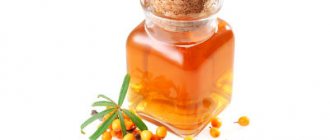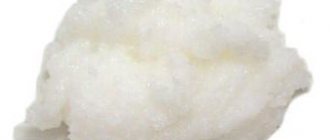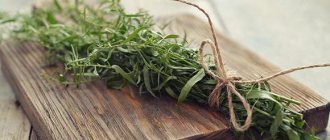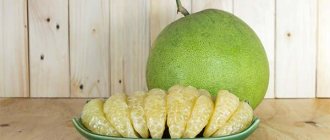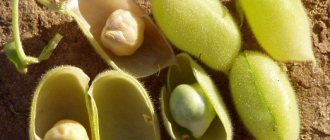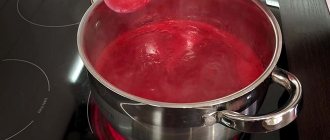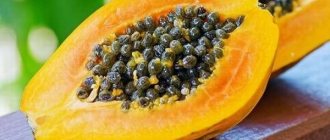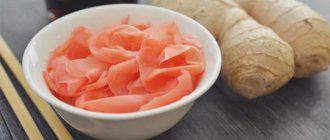How to use coriander
Coriander (cilantro) is a plant, all parts of which are used in cooking. You can use the roots, leaves or seeds of the spice as a seasoning. Read more about coriander in this article.
Appearance (photo) of coriander seasoning
Cilantro is the herbaceous part of the plant. The leaves are used fresh or dried, added during the cooking process or to ready-made soups, meat, fish, and vegetable dishes.
The use of coriander in the form of roots or seeds is possible only in dried form. Fresh roots and green fruits emit an unpleasant odor, which, after processing and drying, transforms into a pleasant anise aroma.
Coriander seeds are the most popular part of the plant. They are added not only to main first and second courses, and salads, but also used to prepare sauces, baked goods, desserts and even drinks. On sale you can find whole seeds or ground coriander - a seasoning that will be indispensable in your kitchen.
What you need to know about coriander?
Russia is the leader in coriander exports. But this was not always the case, just the last few years.
This spice is believed to come from the Mediterranean. It is obtained from the seeds of the plant of the same name. The herbaceous annual reaches a height of 40–60 cm and blooms in mid-summer with small white or pink flowers. After 1-2 months, in place of the flower umbrellas, fruits are formed - round seeds 2-4 mm in diameter with 10-12 ribs.
Many people cultivate the plant in their garden or on the windowsill to collect greenery. In this case, the flowers are mercilessly cut off.
The name of the plant is translated from ancient Greek as “bug”. All thanks to the smell that the leaves emit in an immature state.
Beneficial features
Coriander seeds are rich in essential oils, proteins and tannins, alkaloids, pectin, sterols, organic and fatty acids, rutin and other polyphenols.
Useful properties of coriander:
- choleretic;
- antiseptic;
- painkiller;
- anthelmintic.
The seasoning is useful to include in the diet for poor appetite, general fatigue, for the prevention of cardiovascular diseases and various infections.
Essential oil is obtained from coriander seeds; perfumers use it to synthesize aromatic substances. With repeated dilution, the liquid acquires a very pleasant delicate aroma. With its help, perfumes are given the scent of lily of the valley, violet, bergamot, lemon, lily. The ether is also extracted to obtain fatty oils used in soap making.
Smell and taste
Dried coriander seeds, unlike greens, have a lighter, pleasant spicy aroma. Most of all, it is similar to anise: woody and slightly sweet. The seeds taste spicy, with a slight hint of citrus. Some describe it as “burnt orange.”
When roasting the seeds, the taste and aroma properties are enhanced. The ground powder becomes sweeter and can be used in confectionery.
We recommend: Should you drink chicory after 50 years: the health benefits and harms of the product
Energy value and composition of spices
Chemical composition of cilantro leaves:
- vitamin A;
- B vitamins;
- vitamin C;
- carotene;
- routine;
- potassium;
- calcium;
- copper;
- phosphorus;
- iron;
- magnesium;
- sodium.
Calorie content of 100 g of coriander leaves is 23 kcal.
Chemical composition of coriander seeds:
- vitamin C;
- essential oil;
- fatty oil;
- pectin;
- alkaloids;
- starch;
- protein substances;
- sterols;
- tannins;
- fructose;
- sucrose;
- glucose;
- routine
Calorie content of 100 g of plant seeds is 24.8 kcal.
You will learn more about coriander seasoning in this video:
Useful properties of coriander
The plant grows best in dry, bright places.
When the air temperature becomes stable and frosts on the soil are not expected, the seeds are sown directly into the ground.
Coriander has been used as a spice and medicine for hundreds of years.
Its beneficial properties and side effects were familiar to the ancient Egyptians: mentions of the herb are in papyri, and the seeds were discovered in the tomb of one of the pharaohs.
Rich in fatty and essential oils, cilantro seeds (which are precisely called coriander) contain record amounts of vitamins A and C, tannins and nitrogenous substances, sugars, starch and many others.
A large amount of rutin, carotene and vitamins B and B2 were found in green cilantro.
Use of coriander in cooking
Coriander seasoning is used not only in home, but also in industrial cooking. On a production scale, plant seeds and crushed dried roots are added in the production of sausages and other semi-finished products, canned meat and fish, and cheeses. Coriander is also used for baking bread and baked goods; culinary uses include the production of beer, tinctures and liqueurs.
Below we will tell you which dishes you add coriander to at home.
What does coriander seasoning look like?
Cilantro leaves grow on an erect, bare stem that is branched at the top. They are wide, cut into three parts. The pinnately divided leaves of coriander resemble parsley, but those of cilantro are rounder and wavy, smaller in size and emit a specific smell.
Cilantro seeds are spherical, slightly oblong, and have straight and sinuous ribs. The fruits are sandy or light brown in color.
What is coriander added to (what is it suitable for)
Where to add coriander in the form of leaves:
- meat, fish, legume and vegetable soups;
- fried, stewed and baked meat, shish kebab, khinkali, meat stew;
- homemade sausages;
- vegetable salads.
What coriander is added to - the use of ground coriander and plant seeds:
- various soups;
- meat and fish dishes;
- sauces - satsebeli, tkemali, adjika and others;
- marinades and pickles - for preserving meat and fish, cucumbers, olives;
- for preparing salads - Korean carrots, white and red cabbage salads;
- baking - grains are added to Borodino bread, chopped root - to baked goods, gingerbread;
- preserves and jams;
- beer, tinctures, liqueurs.
Now you know what coriander is and what the spice is suitable for. If you want to make the dish even tastier and more aromatic, combine it with celery, cumin, fennel, garlic and chili pepper.
The seasoning can also be used in the form of coriander honey.
Recipes with coriander
If you want to use coriander for any dishes, but don’t know where to add it, I’ll give you several options.
One of the options for its use is the use of coriander when baking various bakery products.
Borodino bread
For one kilogram of bread dough add 2-3 pcs. coriander Then the dough is molded into bread and baked in the oven. You can also sprinkle coriander seeds on this product.
Marinade
If you are a fan of barbecue, then when preparing the marinade for it, you need to take some coriander seeds. If you do not use ground coriander, but seeds, then you must first grind them. Then mix with other spices and add olive oil. This will make a wonderful marinade.
Coriander is good for making drinks, such as coffee.
Coffee with coriander
For this purpose we will need:
- coffee (ground) - 1 tsp.
- water - 500 ml.
- coriander - 1/3 tsp.
- black pepper (peas) – 5 pcs.
- sugar - to taste.
Pepper and coriander seeds are ground into powder; you can grind them in a coffee grinder, or you can do this in a special mortar. Then the finished powder and coffee are placed in a pot, filled with water and boiled until ready.
You can add some basil leaves to add even more flavor. If you use them, then first, the coffee cools a little, then the leaves are added and infused for about 10 minutes. The finished drink is filtered. It is ready to eat.
We invite you to read WellnessBreathe Deeper: How to make the air in your home ideal
Seasoned tea
You can also make tea with coriander. To do this you will need the following components:
- black tea (preferably brewed, not in bags) - 0.5 tsp.
- coriander beans - 1 tsp.
- lemon - 1 slice.
- water - 250 ml.
The tea leaves are mixed with ground coriander. Then boil water separately and pour boiling water over the tea leaves. Leave for five minutes, strain and you can drink.
A well-known mixture of seasonings called hops-suneli is prepared as follows.
We take spices, basil, marjoram, coriander and dill by volume - all 30 g each. They are all crushed to a powder and mixed. Then add 2 g of red pepper and 0.5 g of saffron.
Required ingredients:
- pork shoulder - 800 g.
- sweet wine - 500 ml.
- ground coriander - 30 g.
- cinnamon - 5 g.
- red pepper (ground) - 5 g.
- Sunflower oil - 30 g.
- onion - 200 g.
- salt - to taste.
The pork is cut into small pieces and placed in a glass jar. Then add all the spices and salt, pour in the wine. The pork is kept in this marinade for about an hour.
Then the meat is removed from the marinade and fried until cooked (until a golden brown crust appears). After this, the fried meat in a special deep bowl is placed in the oven for 40 minutes.
After this, add marinade and finely chopped onion to the meat, continue cooking in the oven for another 40 minutes. You can use potatoes or rice as a side dish.
Here is another option for using coriander. Here, on the contrary, it is used when preparing a side dish, to which you can add meat or sausages.
Take 500 g of potatoes, wash, peel and cut them into four parts. Then put it in a double boiler and cook for about 30 minutes.
During this time, prepare the seasoning mixture. Melt 50 g of butter, add to it 2 tsp of black cumin, 1 tsp of instant broth (stock cube), 100 ml of cream and a couple of teaspoons of ground coriander.
The potatoes cooked in a double boiler should be crushed to a puree, and the prepared mixture should be added to it. Stir and serve.
As already mentioned, coriander is good in preparing various sauces. For example, one of the interesting options.
To prepare the sauce you will need the following ingredients:
- Plums - 300 g.
- Ground coriander - 0.5 tsp.
- Chili pepper - 1 pc.
- Wine vinegar - 1 tbsp. l.
- Port wine - 4 tbsp. l.
- Red basil - 4 sprigs
- Sugar - 2 tbsp. l.
- Water - 1 glass
Take a plum, wash it and remove the pits. Remove all seeds from red pepper. Then we take a ladle, put in the plum and pour in the port. Place on the fire and evaporate the port. Then pour in water, add pepper and bring to a boil. After this, turn down the heat (make it low), put coriander, finely chopped basil and sugar in a saucepan. Cook over low heat for 10 minutes.
Then add vinegar to the mixture, pepper and salt to taste, remove from heat. Cool the sauce to room temperature. Naturally, the plum will not boil, so we pour the sauce into a blender and run it until the sauce becomes a homogeneous mass. After that, put it in the refrigerator for 12 hours.
And at the end of the review, watch a video from the famous program with Malysheva “Live Healthy,” which talks about the beneficial properties of coriander.
This is such a wonderful plant, coriander.
Contraindications and precautions
Coriander is a useful seasoning, but there are contraindications to its use.
You should not add spice to food if you have the following conditions and diseases:
- individual intolerance;
- diabetes;
- increased blood clotting;
- heart failure;
- thrombophlebitis and other vascular diseases.
People with a tendency to allergic reactions, pregnant and lactating women should use coriander with caution.
How to use coriander for healthy people - no more than 2-4 sprigs of cilantro per day or no more than 1-2 g of seeds.
Properties and benefits
Coriander seasoning is very beneficial for our body. I'll tell you a little more about this right now.
In the East, it is believed that coriander warms the blood and helps the heart work - it cleanses and strengthens blood vessels. It helps with problems with intestinal motility and has choleretic properties and increases appetite. The analgesic properties of coriander (cilantro) have also been noted for problems with the stomach and intestines. Cilantro nourishes the blood and strengthens the heart muscle.
Vegetable diet for weight loss
Coriander essential oils promote the absorption of heavy foods, especially meat and root vegetables. It’s not for nothing that in the Caucasus no one sits down at the table unless there is a bunch of cilantro (corinader) on the table. With it, food is easily digested, without leaving a feeling of heaviness and bloating. In the East, in the Mediterranean, all parts of the coriander (cilantro) plant are used, including herbs and seeds, and used as a seasoning for various dishes. Cilantro seeds are added to bread, adjika-type seasoning, soups, canned food and meat dishes. The leaves are used in preparing almost all dishes. However, the taste of fresh cilantro - harsh and spicy - is not to everyone’s taste, but in dishes it serves only as a decoration.
